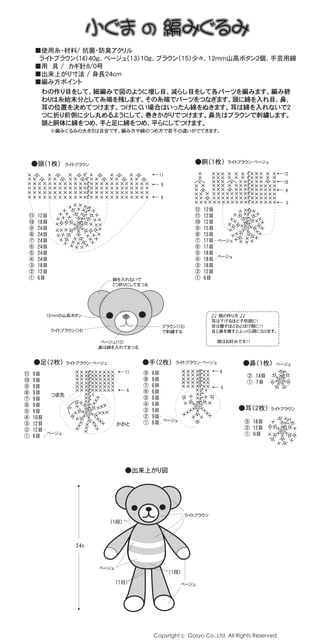16920
- 1. ŌĆó┬¼ ŌĆÜ├£ ŌĆÜ├ī ŌĆó├Æ ŌĆÜ├®ŌĆÜ├Ø ŌĆÜ┬« ŌĆÜ├ØŌĆÜ┬« ŌĆÜ├Ł ŌĆÜ├ī ŌĆó├¼ŌĆÜ├© ŌĆō├ÜŌĆÜ├░ŌĆÜ┬ĄŌĆÜ├äŌĆóA├Ś ŌĆÜ├ØŌĆÜ├ģŌĆó}ŌĆÜ├ī ŌĆÜ├” ŌĆó ŌĆó├Æ ŌĆÜ┬żŌĆÜ├ēŌĆśŌĆóŌĆÜ┬ĄŌĆō├ÜŌĆóA ŌĆÜ├¦ ┼Æ┬Ė ŌĆÜ┬ĄŌĆō├ÜŌĆÜ├░ŌĆÜ┬ĄŌĆÜ├ä┼ĀeŲÆpŌĆó[ŲÆc ŌĆÜ├░ŌĆó├Æ ŌĆÜ├ØŌĆÜ├£ŌĆÜ┬Ę ŌĆóB├Æ ŌĆó ŌĆÜ├ØŌĆóI ŌĆÜ├Ł ŌĆÜ├© ┼ĮŌĆ” ŌĆÜ├Ź ┼ĮnŌĆōŌĆōŌĆó┬¬ŌĆÜ├å ŌĆÜ┬ĄŌĆÜ├ä┼ĮŌĆ” ŌĆÜ├░┼ĮcŌĆÜ┬ĄŌĆÜ├£ŌĆÜ┬Ę ŌĆóB ŌĆÜ├ī ┼ĮŌĆ” ŌĆÜ├ģŲÆp ŌĆÜ├░ŌĆÜ├é ŌĆÖ[ ŌĆÜ┬╗ ŌĆÖ[ ŌĆó[ŲÆc ŌĆÜ├łŌĆÜ┬¼ŌĆÜ├£ŌĆÜ┬Ę ŌĆóB┬¬ ŌĆÜ├ēŌĆō├łŌĆÜ├░ŌĆ£├╝ŌĆÜ├¬ŌĆō├ÜŌĆóA ŌĆóA ŌĆ£ ŌĆó@ ┼Į┬© ŌĆÜ├ī ╦å├ŖŌĆÖuŌĆÜ├░┼Æ╦å ŌĆÜ├¤ŌĆÜ├äŌĆÜ├éŌĆÜ┬»ŌĆÜ├£ŌĆÜ┬Ę ŌĆóB ŌĆÜ├éŌĆÜ┬»ŌĆÜ├ēŌĆÜ-ŌĆÜ┬óŌĆó├¬ ŌĆÜ├Ź ŌĆÜ┬óŌĆÜ├ü ŌĆÜ├▒ŌĆō├łŌĆÜ├░ŌĆÜ├ŖŌĆÜ┬½ŌĆÜ├£ŌĆÜ┬Ę ŌĆóB┬© ŌĆÜ├Ź ŌĆō├łŌĆÜ├░ŌĆ£├╝ŌĆÜ├¬ŌĆÜ├łŌĆÜ┬óŌĆÜ├ģŌĆÜQ ŌĆóŌĆĪ ŌĆÜ┬Į ┼Į ŌĆÜ├éŌĆÜ├ēŌĆó├£ ŌĆśOŌĆś┬ż ŌĆÜ├ēŌĆó-ŌĆÜ┬Ą┼Ā├øŌĆÜ├¤ŌĆÜ├®ŌĆÜ├” ŌĆÜ├© ŌĆÜ┬żŌĆÜ├ēŌĆÜ┬ĄŌĆÜ├äŌĆóA ŌĆÜ┬½ŌĆÜ┬®ŌĆÜ┬¬ ŌĆÜ├© ┼Ā┬¬ ŌĆÜ├ģŌĆÜ├éŌĆÜ┬»ŌĆÜ├£ŌĆÜ┬Ę ŌĆóB@ ŌĆÜ├Ź ŲÆu ŲÆE ŌĆÜ├ģ┼ĮhŌĆóJ ŌĆó ŌĆó├” ŲÆŌĆ░ŲÆŌĆ£ ŌĆÜ┬ĄŌĆÜ├£ŌĆÜ┬Ę ŌĆóB ŌĆ£┬¬ ŌĆÜ├å ŌĆś├ī ŌĆÜ├ēŌĆō├łŌĆÜ├░ŌĆÜ├é ┼Į├©ŌĆÜ├å ŌĆÜ├ēŌĆō├łŌĆÜ├░ŌĆÜ├é ŌĆó┬Į ŌĆÜ├ēŌĆÜ┬ĄŌĆÜ├äŌĆÜ├é ŌĆ£┬Ę ŌĆÜ├¤ŌĆóA ŌĆś┬½ ŌĆÜ├¤ŌĆóA ŌĆÜ├¦ ŌĆÜ┬»ŌĆÜ├£ŌĆÜ┬Ę ŌĆóB ŌĆó┬” ŌĆÜ├ØŌĆÜ┬« ŌĆó├Æ ŌĆÜ├®ŌĆÜ├ØŌĆÜ├ī ŌĆś├źŌĆÜ┬½ŌĆÜ┬│ŌĆÜ├Ź ŌĆō├Ü╦å├ĆŌĆÜ├ģŌĆÜ┬Ę ŌĆóB├Æ ŌĆÜ├óŌĆō├łŌĆÜ├ī ŌĆÜ├é ŌĆó ŌĆÜ├ØŌĆó├╗ ŌĆÜ├¤ŌĆó├╗ŌĆÜ├ģ┼Į├Ī┼Ā┬▒ŌĆÜ├ī ╦å├ĪŌĆÜ┬óŌĆÜ┬¬ ŌĆÜ├ģŌĆÜ├äŌĆÜ┬½ŌĆÜ├£ŌĆÜ┬Ę ŌĆóB ŌĆó┼ō ŌĆói ŌĆōŌĆĪŌĆój ŲÆŌĆ░ŲÆguŲÆŌĆ░ŲÆŌĆ£ ŌĆ£┬¬ ŌĆÜP ŲÆC ŲÆ ŲÆE ŌĆó┼ō ŌĆói ŌĆōŌĆĪŌĆójŲÆŌĆ░ŲÆguŲÆŌĆ░ŲÆŌĆ£ŌĆóE ŲÆŌĆ” ŌĆ£┬Ę ŌĆÜP ŲÆC ŲÆ ŲÆE ŲÆxŌĆó[ŲÆW 11 12 10 9 8 6 5 5 ŌĆĪKŌĆó@12ŌĆō├Ü 4 ŌĆĪJŌĆó@12ŌĆō├Ü ŌĆĪJŌĆó@12ŌĆō├Ü 2 ŌĆĪI ŌĆó@ 18ŌĆō├Ü ŌĆĪI ŌĆó@ 12ŌĆō├Ü ŌĆÜ├Ł ŌĆĪH 24ŌĆō├Ü ŌĆó@ ŌĆÜ├Ł ŌĆĪH 15ŌĆō├Ü ŌĆó@ ŌĆĪG 24ŌĆō├Ü ŌĆó@ ŌĆĪG 15ŌĆō├Ü ŌĆó@ ŌĆĪFŌĆó@24ŌĆō├Ü ŌĆĪFŌĆó@17ŌĆō├Ü ŲÆxŌĆó[ŲÆW ŲÆŌĆ” ŌĆĪEŌĆó@24ŌĆō├Ü ŌĆĪEŌĆó@17ŌĆō├Ü ŌĆĪD 24ŌĆō├Ü ŌĆó@ ŌĆĪD 18ŌĆō├Ü ŌĆó@ ŲÆxŌĆó[ŲÆW ŲÆŌĆ” ŌĆĪC 24ŌĆō├Ü ŌĆó@ ŌĆĪC 18ŌĆō├Ü ŌĆó@ ŌĆĪBŌĆó@18ŌĆō├Ü ŌĆĪBŌĆó@18ŌĆō├Ü ŌĆĪA 12ŌĆō├Ü ŌĆó@ ŌĆĪA 12ŌĆō├Ü ŌĆó@ ŌĆĪ@ ŌĆÜU ŌĆó@ 6ŌĆō├Ü ŌĆō├łŌĆÜ├░ŌĆ£├╝ŌĆÜ├¬ŌĆÜ├łŌĆÜ┬óŌĆÜ├ģ ŌĆĪ@ 6ŌĆō├Ü ŌĆó@ 2ŌĆÜ├é ŌĆÜ├© ŌĆó├£ ŌĆÜ├ēŌĆÜ┬ĄŌĆÜ├äŌĆÜ├£ŌĆÜ├éŌĆÜ├® 12ŌĆÜŌĆó ŌĆÜ├ī ┼ĮRŌĆóŌĆÜŲÆ{ŲÆ^ ŌĆÜŌĆó ŲÆŌĆ£ ŌĆó├┤├┤ ŌĆó ┼Ā├¦ŌĆÜ├ī ŌĆó├¼ŌĆÜ├© ŌĆó├┤├┤ ŌĆó├╗ ŌĆó ┼Į┬© ŌĆÜ├Ź ŌĆ░┬║ ŌĆÜ├®ŌĆÜ├ÖŌĆÜ├ć ŌĆÜ┬░ ┼ĮqŌĆ╣┼Ė ┼Ā├¦ŌĆÜ├ēŌĆóI ŲÆu ŲÆE ŌĆói ŲÆŌĆ░ŲÆŌĆ£ 15ŌĆój ŌĆō├ÜŌĆÜ├Ź ŌĆö┬Ż ŌĆÜ├ÖŌĆÜ├ć ŌĆÜ├å ŌĆÜ┬Ę ŌĆÜ┬© ŌĆÜ├ÜŌĆÜ┬»┼Ā├¦ŌĆÜ├ēŌĆóI ŌĆóI ŲÆŌĆ░ŲÆgu ŲÆE ŌĆói ŲÆC ŲÆ ŲÆŌĆ░ŲÆŌĆ£ 14ŌĆój ŌĆÜ├ģ┼ĮhŌĆóJ ŌĆÜ├® ŌĆÜ┬Ę ŌĆō├ÜŌĆÜ├å ŌĆÜ├░ŌĆö┬Ż ŌĆÜ├å ŌĆÜ├ü ┼Ā├¦ŌĆÜ├ēŌĆÜ├łŌĆÜ├© ŌĆóB ŌĆó@ ŌĆÜ┬Ę ŌĆÜ├ō ŌĆÜ-ŌĆÜ├¦ ŌĆÜ├£ŌĆÜ┬Ę ŲÆxŌĆó[ŲÆW ŌĆói ŲÆŌĆ” 13ŌĆój ŌĆó@ ├¦ŌĆÜ├Ź ŌĆÜ┬© ŌĆóD ŌĆó┼Ā @ ŌĆÜ├ØŌĆÜ├ģŲÆl ŌĆóI ŌĆóI ŌĆó@ ŌĆō├łŌĆÜ├░ŌĆ£├╝ŌĆÜ├¬ŌĆÜ├äŌĆÜ├£ŌĆÜ├é ŌĆÜ├Ź ŌĆÜ├® ŌĆó┼ō ŌĆói ŌĆōŌĆĪŌĆójŲÆŌĆ░ŲÆguŲÆŌĆ░ŲÆŌĆ£ŌĆóE ŲÆŌĆ” ŌĆś┬½ ŌĆÜQ ŲÆC ŲÆ ŲÆE ŲÆxŌĆó[ŲÆW ŌĆó┼ō ŌĆÜQ ŲÆŌĆ░ŲÆguŲÆŌĆ░ŲÆŌĆ£ŌĆóE ŲÆŌĆ” ┼Į├©ŌĆói ŌĆōŌĆĪŌĆój ŲÆC ŲÆ ŲÆE ŲÆxŌĆó[ŲÆW ŌĆó┼ō ŌĆói ŌĆōŌĆĪŌĆój ŲÆxŌĆó[ŲÆW ŌĆó@ŌĆÜP ŲÆŌĆ” 11 ŌĆĪH 6ŌĆō├Ü ŌĆó@ 9 ŌĆĪJŌĆó@9ŌĆō├Ü ŌĆĪA 14ŌĆō├Ü ŌĆó@ ŌĆĪI ŌĆó@ 9ŌĆō├Ü ŌĆĪG 6ŌĆō├Ü ŌĆó@ ŌĆÜ├Ł ŌĆĪ@ ŌĆÜV ŌĆó@ŌĆō├Ü ŌĆĪH 9ŌĆō├Ü ŌĆó@ ŌĆĪFŌĆó@ 6ŌĆō├Ü 5 6 ŌĆĪEŌĆó@ 6ŌĆō├Ü 4 ŌĆĪG 9ŌĆō├Ü ŌĆó@ ŌĆÜ├éŌĆÜ├£ŌĆó├” 5 ŌĆĪFŌĆó@9ŌĆō├Ü ŌĆĪD 6ŌĆō├Ü ŌĆó@ ŌĆĪEŌĆó@9ŌĆō├Ü ŌĆĪC 6ŌĆō├Ü ŌĆó@ ŌĆĪD 9ŌĆō├Ü ŌĆó@ ŌĆĪBŌĆó@ 9ŌĆō├Ü ŌĆÜ├Ł ŌĆó┼ō ŌĆói ŌĆōŌĆĪŌĆójŲÆŌĆ░ŲÆguŲÆŌĆ░ŲÆŌĆ£ ┼Į┬© ŌĆÜQ ŲÆC ŲÆ ŲÆE ŌĆÜ├Ł ŌĆĪC 10ŌĆō├Ü ŌĆó@ ŌĆĪA 9ŌĆō├Ü ŌĆó@ ŌĆĪBŌĆó@12ŌĆō├Ü ŌĆÜ┬®ŌĆÜ┬®ŌĆÜ├å ŌĆĪ@ 6ŌĆō├Ü ŲÆxŌĆó[ŲÆW ŌĆó@ ŲÆŌĆ” ŌĆĪBŌĆó@ 18ŌĆō├Ü ŌĆĪA 12ŌĆō├Ü ŌĆó@ ŌĆĪA 12ŌĆō├Ü ŌĆó@ ŌĆÜ├Ł ŌĆĪ@ 6ŌĆō├Ü ŌĆó@ ŲÆxŌĆó[ŲÆWŲÆŌĆ” ŌĆĪ@ ŌĆÜU ŌĆó@ŌĆō├Ü ŌĆó┼ō ŌĆö╦å ├Ż ŌĆÜ├© ŌĆóo ŌĆó ŌĆÜ┬¬ ŌĆó} ŲÆŌĆ░ŲÆgu ŲÆE ŲÆC ŲÆ ŲÆŌĆ░ŲÆŌĆ£ ŌĆói ŌĆój 1ŌĆÖi 24ŌĆÜŲÆ ŲÆxŌĆó[ŲÆW ŲÆŌĆ” ŌĆói ŌĆój 1ŌĆÖi ŌĆói 1ŌĆō├ÜŌĆój ŲÆxŌĆó[ŲÆW ŲÆŌĆ” Copyright c Gosyo Co.,Ltd. All Rights Reserved.





















